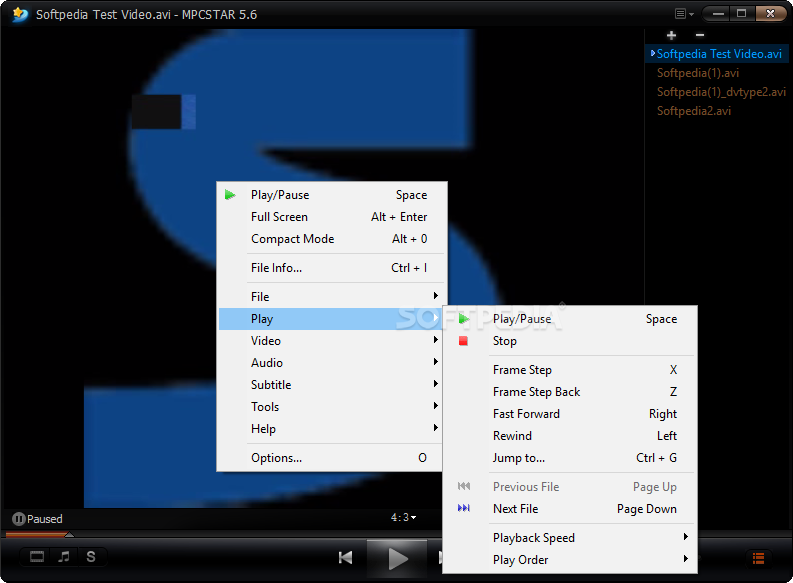

- #Windows media player clasic custom play speed code
- #Windows media player clasic custom play speed series
- #Windows media player clasic custom play speed windows
For example, the Playlist object is exposed as IWMPPlaylist.

#Windows media player clasic custom play speed code
NET Framework as in unmanaged code and script.

#Windows media player clasic custom play speed windows
The object model for the Windows Media Player control is basically the same in the. Object Model Compatibility of the Control You can set these properties either in code or in the Properties window when the Windows Media Player control is selected in the form designer. If you do not want to use the visible image of the Player in your application, hide the default Player by setting any one of the following properties: Property

When you first add the Windows Media Player control to a form, it will be visible. However, the AxWindowsMediaPlayer class uses data types, interfaces, and other elements from the WMPLib namespace. The Windows Media Player control is an AxWindowsMediaPlayer object from the AxWMPLib namespace. The directive ensures that you can refer to Player objects without fully qualifying their names. To make using the objects in the Player namespace easier, you should include the namespace in the using or imports directives of your files, as follows: using WMPLib You can find them in the Solution Explorer under References. You may want to change the name to something more easily remembered, such as "Player".Īdding the Windows Media Player control from the Toolbox also adds references to two libraries created by Visual Studio, AxWMPLib and WMPLib. Visual Studio gives the Windows Media Player control a default name such as "axWindowsMediaPlayer1". You can now select Windows Media Player in the Toolbox and add it to a form. The Windows Media Player control will be placed on the current Toolbox tab. If Windows Media Player does not appear in the list, click Browse, and then open Wmp.dll, which should be in the Windows\System32 folder.Ĭlick OK. On the COM Components tab, select Windows Media Player. This opens the Customize Toolbox dialog box. Right-click within the Toolbox, and then select Choose Items. If Windows Media Player does not appear in the Components portion of the Toolbox, do the following: Start Visual Studio, then create a new project. Adding the Windows Media Player Controlīefore creating a new project, make sure that the latest version of Windows Media Player and the Windows Media Player SDK is installed on your computer. NET Framework application through the Toolbox in Visual Studio.
#Windows media player clasic custom play speed series
Hide menu If you select, the menu bar will be hidden, so you can operate from the context menu.You can add the Windows Media Player 9 Series or later ActiveX control to a. On the menu bar display Items that are checked in are displayed, and you can click to switch between showing and hiding. MPC-HC can individually show / hide the menu bar, control buttons, seek bar, etc., and has three types of presets. To fix the aspect ratio when resizing the window, use the menu bar display から Options Open the left sidebar player Select More It is in Fix window aspect ratio when resizing Check the box. Fixed aspect ratioīy default, the window size can be changed freely, and letterboxes (black bands) are inserted on the top, bottom, left, and right. スタート From the context menu (right-click menu) Apps and features Open from the left sidebar Default appSelect Video player To MPC-HC The set. To open the file associated with setup in MPC-HC, set it as the default app in Windows. If MPC-HC is installed with K-Lite Codec Pack, only MPC-HC cannot be uninstalled, so uninstall K-Lite Codec Pack.


 0 kommentar(er)
0 kommentar(er)
